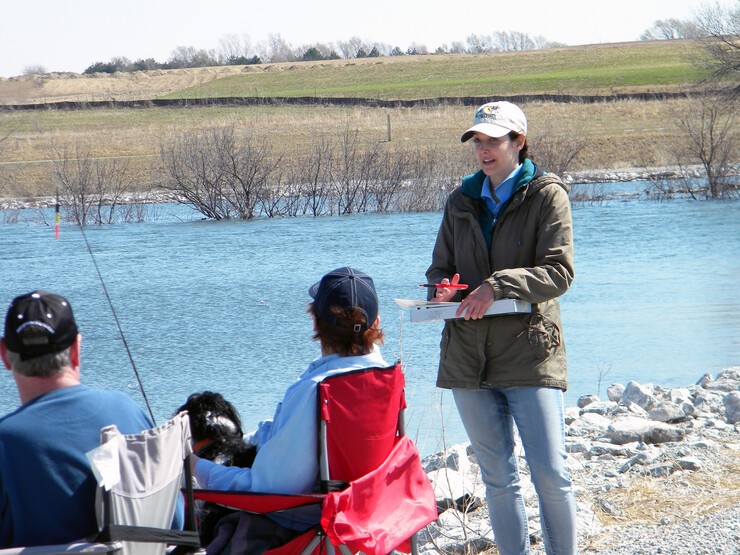· 2 min read
Husker researchers to survey anglers at Omaha lakes

Those fishing in the Omaha metro area may bump into a University of Nebraska–Lincoln researcher who wants to know more about the fishing experience.
Researchers with the Nebraska Cooperative Fish and Wildlife Research Unit, based at the School of Natural Resources, are surveying anglers at Standing Bear Lake, Prairie Queen Lake, Lake Halleck and Schwer Pond between April 1 and Oct. 31. The goal is to understand how anglers influence fish populations and how those fish populations respond to fishing.
In addition to estimating catch rates based on angler responses, the researchers expect to determine total fishing pressure at each lake. Over the six months, they also will count at random times the number of anglers on all Omaha public metropolitan lakes to establish use rates.
The information will be used to help the Nebraska Game and Parks Commission, which is funding the research, make management decisions about Nebraska’s fisheries.
“We believe that these small urban lakes are valuable to people who fish in these communities,” said Larry Pape, aquatic education specialist with Nebraska Game and Parks. “Knowing who, when and how people are using them will give us insights into making them better for all types of anglers.”
Previous research on angler behavior has primarily focused on the state’s largest waterbodies, such as Lake McConaughy, but scientists expect anglers fishing at small urban waterbodies to have different experiences and motivations for fishing.
“We’re excited to learn more about how anglers use urban lakes,” said Mark Kaemingk, research assistant professor in the School of Natural Resources, who’s leading the project. “We know anglers are the No. 1 factor influencing fish populations, and how they use a lake informs how it should be managed. But there is still a lot we don’t know.”
The surveys are expected to take anglers about three minutes to complete. After collection, the researchers will analyze the results and distill the information for further distribution.








